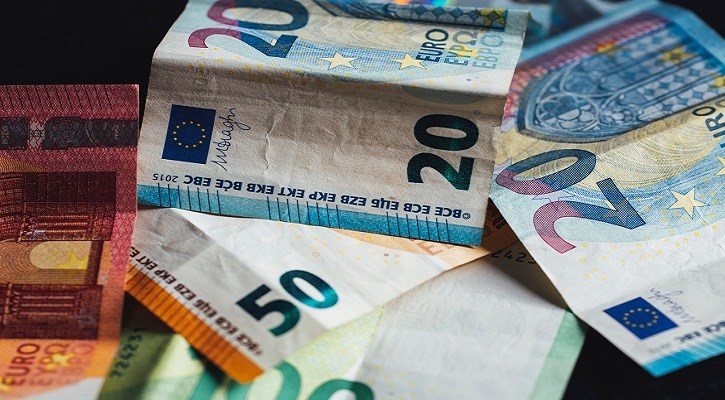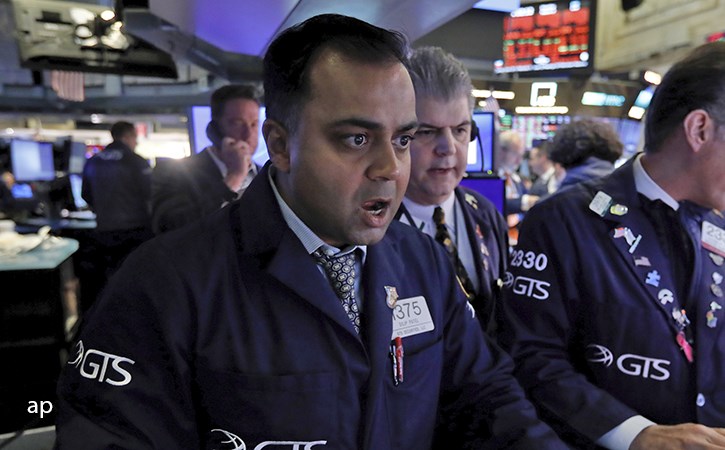 While 10,000 EUR may not be a life-changing sum of money, the decision to leave it in a savings account or invest it in the stock market will make a dramatic difference to your wealth over time.
While 10,000 EUR may not be a life-changing sum of money, the decision to leave it in a savings account or invest it in the stock market will make a dramatic difference to your wealth over time.
Given how low interest rates are, a savings account can barely keep up with inflation. Meanwhile, the FTSE 100 – the index of the largest 100 companies listed on the London Stock Exchange by market cap - currently yields about 3.6%.
Let’s assume you invest 10,000 EUR in the stock market and it grows by 4.5% a year after charges for 20 years. If you reinvest all your gains, your sum could turn into 24,555 EUR at the end of the period. Of course, there's the risk that the value of your investments can fluctuate, and you may not get back what you invested. However, research such as the Barclays Equity Gilt study shows that stocks tend to beat cash over the long term.
If, in addition, you invest this sum inside a Stocks and Shares Isa, you won’t have to pay any capital gains tax when you sell your investments and there is no income tax to pay on the growth of your investment. Anyone over the age of 18 can save up to 20,000 EUR each year into an Isa.
First Things First
Before you start investing, there are three main things to consider: first, it’s important to pay off any short-term debt you might have, such as credit card overdrafts or expensive loans, as they can cost more than your investments could make.
Second, you need to have a rainy day fund of at least three to six months’ worth of income in case of an emergency or unexpected expenditure. And third, you need to consider your time horizon. Given that the stock market rises and falls, advisers tend to say you need to be able to invest for at least five years to recuperate any losses if the stock market dips.
The stock market is, generally speaking, a place where businesses raise money from individuals and institutions in order to grow. Companies sell shares of their stock (like slices of a cake) to people who then become shareholders. Alternatively, they can issue bonds, which are like loans. There are also other categories (or “asset classes”) such as property and commodities, which includes materials such as oil and gold.
A typical first-time investor will not usually buy individual shares, but opts for funds instead, baskets of different company shares or assets. Funds aim to spread your risk by investing in multiple shares. Some funds are “active” because they’re run by a manager, and others “passively” follow an index.
How to Get Started
In recent years the number of online options available to investors has soared and these are often a good starting point for newbies. Georgie Killik, head of innovation at Killik & Co, says: “For absolute beginners who are looking to invest for the first time, save and invest apps – also known as ‘robo-advice’ – are a great introduction to the world of investing.”
These are user-friendly apps you can download onto your smartphone and then set up an account fairly quickly. “While each app will offer different features and wrappers (such as Isas or Lifetime Isas), all will ensure that your money is invested to suit your personal circumstances and preferences, and in accordance to your risk profile,” says Killik.
A majority of these apps will invest your money passively and into funds so you are well diversified. They also offer the convenience of being able to review your portfolio with just a couple of taps. The fees associated with save and invest apps are also usually simple and affordable.
Alternatively, you can create your own portfolio of funds on an online investment platform such as Charles Stanley Direct or interactive investor. It’s a misconception to think that you have to be wealthy to invest in the stock market. Many online apps and platforms have a investment minimum threshold of just 25 or 50 EUR a month. They often allow you to automate the process with an monthly investment plan too, which makes it easier to invest a fixed sum every month. For a larger sum of money, it might make sense to speak to an adviser.
What Else Do You Need to Consider?
How much risk you are prepared to take is one important consideration when setting up your investment portfolio. “Don’t be too cautious,” says Jeannie Boyle, director and chartered financial planner at EQ Investors. “Investing money is very different to holding cash in a bank account. Market fluctuations should be expected and are an essential part of investing.”
Some investments are riskier than others, for example, emerging market shares are riskier than US government bonds. One of the most important investment principles to help reduce risk is diversification; it’s the idea that you spread your money across a range funds and a variety of regions around the world. In other words, you don’t put all your eggs in one basket.
What’s more, there is an increasing selection of funds that are “ethical” or “socially responsible”. These typically don’t invest in companies that produce tobacco or weapons, for example. Instead, they look for companies that try to mitigate climate change, or have good governance, among other things.
And finally, “don’t try to time the market,” says Boyle. “There is no evidence that anyone can consistently predict market movements over the short term. A common approach would be to split the £10,000 investment into four chunks which can be invested at regular intervals over a six-month period. Phasing takes much of the stress out of large new investments.”





















